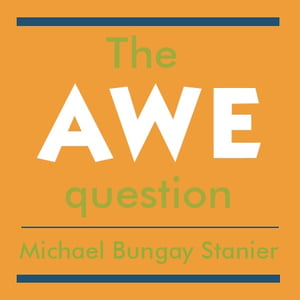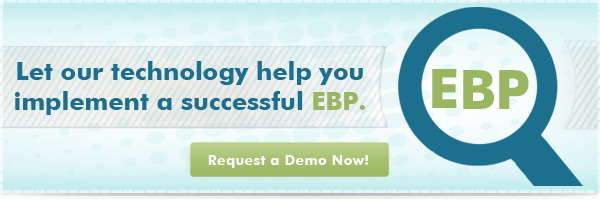 “And what else?” is perhaps the most important question in the The Coaching Habit: Say Less, Ask More and Change the Way You Lead Forever. While technically the second question presented, it should be the most oft repeated question by far. According to the author, Michael Bungay Stanier, the AWE question works like magic, and he declares it to be the “The Best Coaching Question in the World.” He explains, “With seemingly no effort, it creates more – more wisdom, more insights, more self-awareness, more possibilities – out of thin air.”
“And what else?” is perhaps the most important question in the The Coaching Habit: Say Less, Ask More and Change the Way You Lead Forever. While technically the second question presented, it should be the most oft repeated question by far. According to the author, Michael Bungay Stanier, the AWE question works like magic, and he declares it to be the “The Best Coaching Question in the World.” He explains, “With seemingly no effort, it creates more – more wisdom, more insights, more self-awareness, more possibilities – out of thin air.”
It is a challenge to develop the habit of asking this question because your Advice Monster will discover the problem and the solution to the problem very quickly. The human brain does not like ambiguity and pushes us to find clarity, the quicker the better. Like most unhelpful habits, awareness that you have an Advice Monster is a critical first step. The recovery process is simple but not easy. Whenever you feel the urge to offer advice, insert “And what else?” in its place. (I purchased an ugly cartoon monster for all of my staff and we all have it on our desk as a reminder that the Advice Monster is alive, well and eager to take over as soon as you let your guard down.)
To illustrate the AWE question in practice, below is the conversation I had with my client, Kenny. Note that often simple silence serves the same function as the “And what else?” question. That is, if you can resist the urge to eliminate the discomfort of the silence by asking another question or making another comment.
Me: What’s on your heart and mind?
Kenny: Not much.
Me: Silence. Don’t be afraid of silence. Giving in to the temptation to fill the silence with another question or small talk stops the client’s thought process. Assume that silence means the client is thinking. That is a good thing!
Kenny: I’m fine. How are YOU?
Me: (By emphasizing “YOU,” Kenny was hoping I would determine the direction of the session. Perhaps I would launch off into another discussion or question to break the tension of silence and get him off the hook? He knows by now that is unlikely to happen, but he still tries.) I’m good but I’m more interested in what’s on YOUR mind.
Kenny: (Smirking…knowing I am not going to take over but knowing he gave it a good try). I guess I had a good week at work.
Me: (We therapists are suckers for any discussion about work and children. We see it as a sign that the client wants to discuss prosocial and/or deeper issues…sometimes that is true…sometimes it is red meat to get us to focus on the first issue they bring up.) And what else?
Kenny: Well…my daughter turned six years old last week.
Me: (Now I could ask about his daughter and ask to see a picture which might be fruitful, but I think there is a bigger issue under the surface. If he really wants to discuss his daughter, he will let me know. No harm in providing more time and space to discover if that is what is really on his mind.) And?
Kenny: I guess that is it.
Me: (Silence. I don’t think that is really it, but I could be wrong.)
Kenny: What do you want me to say?
Me: (Now I know am I am on the right track that there is something else. He really wants me to take over and is getting defensive. We are getting there.) Anything else on your mind?
Kenny: (After a period of silence that felt like an hour but was actually about 20 seconds). It made me think about my sixth birthday. I went to visit my Dad in prison.
Me: Silence. (A brief pause does not mean their thought is finished. Sit with the silence. It allows people to feel, rather than just talk.)
Kenny: It sucked. I was scared. It was weird.
Me: And?
Kenny: I was nervous…and my daughter had to visit me at the halfway house on her sixth birthday. I’m no better than my deadbeat Dad. I guess that sucks worse!
Bingo! We have the “what else.” Obviously, there are lots of options to continue this session, but the purpose of this blog is to illustrate the use of the “AWE: And What Else?” question. Later we will discuss the various avenues to continue with this discussion. By the way, the urge is likely to be something like, “Well, your Dad was in prison and you are in a halfway house. That is better.” Not a great response. Saying anything that decreases the emotional charge of a clients’ experience is self-defeating. Sitting with that discomfort results in amazing results…more later on that idea.
There are three primary reasons we focus on the first issue that is presented rather than asking, “And what else?”
- The Advice Monster: We are so eager to fix the problem, there is no sense in wasting more time discussing the problem. Let’s get busy fixin’ it. NEWS ALERT: Your advice is not as good as you think. It’s not that you aren’t wise, it is just that you see the world through YOUR eyes, not the CLIENT’S. You are not an expert on their life. Full stop.
- The Efficiency Engineer: You are in a hurry and think it is more efficient to get down to business. If you jump at the first offered issue, it is highly unlikely you are addressing the right problem. Great advice (that really isn’t that great) for the wrong problem (because you focused too early) offered when it hasn’t been asked for (because people want to feel in control of their own life) is not efficient. It is effective in another way. It effectively creates resistantance. 100% of the time. You may not immediately see the resistance, but you will spend lots of time dealing with it in the coming days. So much for efficiency.
- The Superhero: You want to rescue the client. You don’t believe they really understand what is best for them, so you plan to define the question and the answer. Most of us went into this field because we want to help others. That is a virtue. However, the desire to help is often accompanied by the silent assumption that your client does not know what is best for them. They do!
The AWE question is brilliant in its simplicity. It respects the clients’ ability to think about and discover the real issue. It allows them to control the direction of the conversation. Most offenders feel completely out of control for a variety of reasons. Giving them control over their therapeutic sessions is effective and efficient. As a rule of thumb respond with, “And what else?” at least three times before deciding you have the focus of the session. The clients’ emotions and passion with which he/she discusses the issue will let you know that you have hit what’s really on their heart and mind.
The Focus Question: “What’s the real challenge here for you?” is the next blog topic. A solid opening, (“What’s on your mind?”) accompanied by a series of AWE questions (“And what else?”) filters through the small talk and noise. Now, let’s find out what is specifically creating the angst for the client. Stay tuned…



